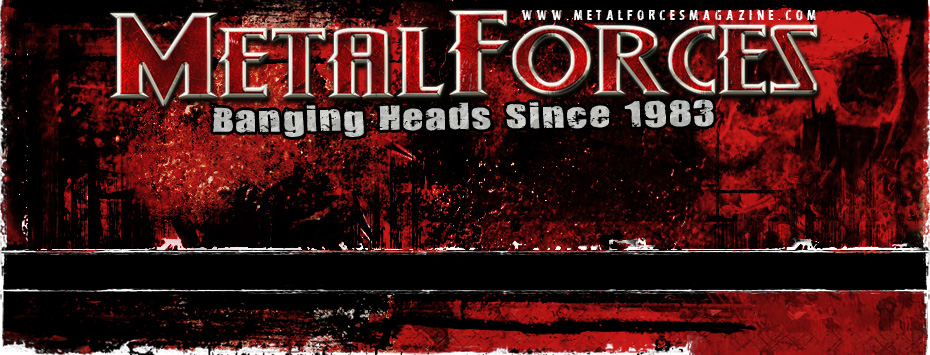
DANIEL EKEROTH – Under The Influence Of BATHORY
Anthony Morgan
May 2012
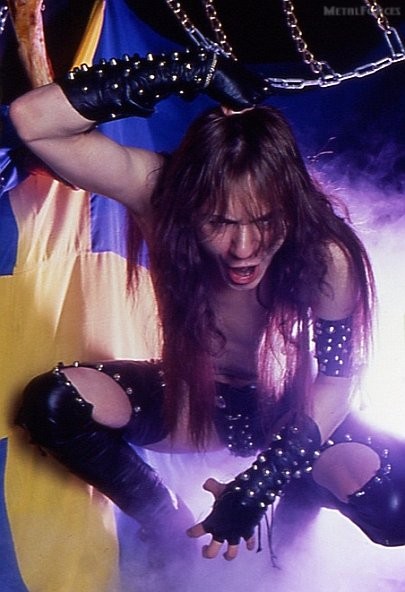
|
Having spent the early 80s as a member of numerous Oi! and punk outfits (including Stridskuk, which translates from Swedish as ‘War Cock’), Tomas ‘Quorthon’ Forsberg launched a music magazine advert in search of a bassist and drummer. Formerly of traditional metal group Die Cast, drummer Jonas Akerlund and bassist Fredrick Hanoi would respond in late February 1983. March 16th 1983 was the arguable date of formation, the trio meeting at Musikbörsen in Kungsholmen and travelling to their inaugural rehearsal at Sigtunagatan, near S:t Eriksplan in Stockholm. Christened after legendary Hungarian figure Countess Elizabeth Bathory, the group in question was Bathory. Bathory’s initial line-up wasn’t stable, changing by the time the assortment’s self-titled debut arrived in October 1984 through Tyfon / Black Mark Productions.
“That’s the first one I heard obviously,” recalls Daniel Ekeroth, author of Swedish Death Metal and bassist of death metal units Dellamorte and Usurpress. “It was a schoolmate of mine; we were the only two guys in our class who were into heavy metal. He had gotten this album somehow, and played it to me. We thought it was like Venom, but far more intense. This was the most intense band we had ever heard. It was just mad, and we had no idea that they were from Sweden. We thought ‘This is a strange band. They must be from Canada or somewhere far out, like Voivod or something.’ We really thought they were from Canada for like a year. I think there was some information on The Return… that made me realise they were from Sweden, but they were very obscure.
“No-one else we knew even knew who Bathory was, and there was no interview or any information in those days (laughs). There was no internet or connections. I lived in a small town in Sweden. I think when I got Return, somehow I got to know that they were from Sweden. They sounded great, and were very much the most extreme heavy metal band in the world at that time. That was what I felt, and I was always scared of them because their album cover was so primitive and everything was just mad about Bathory. I loved them from the first, even though I was a bit afraid (laughs).”
Sophomore full-length The Return… was issued in May 1985. “The Return… is probably the most extreme album by Bathory,” the writer feels. “It was just totally over the top, and crazy in every way. Today I think that maybe The Return… is the weakest album of the first four classic Bathory albums, but it is the most extreme. It’s weird because it has the worst sound of those first four albums, but it’s the only one that was recorded in a professional studio (Elektra Studios in Stockholm, Sweden). I guess Bathory was dependent on having a low-tech garage studio sound. That’s one album that was recorded in a big studio but sounded worse, because the engineer obviously didn’t have a clue how to record this music. There was nothing around that sounded like that in Sweden at least. If there were maybe bands like Sodom, Destruction and Slayer in Sweden they would have known what to do, but this was just totally out there and nobody knew.
“Because you’re used to that kind of music maybe today you can hear the flaws, that the sound is not so good and it’s pretty untight. I think the songs and the feeling of it though is still light years ahead of all black metal made today. It has some kind of magic to it that modern music doesn’t have. The Return…, I remember that was the album I used to torture my parents with. When I was angry with them I’d put on The Return…, and they’d just go ‘Turn this off.’ They could accept Metallica or Slayer, but Bathory was just too much.”
Hailed as an ‘almost perfect lesson in extreme metal’ by the journalist, third studio platter Under The Sign Of The Black Mark came in 1987. “I feel that still today it might be the best black metal album ever made because there are just so many things going on,” he enthuses. “Today everybody knows that a drum machine was used on many of the songs. It sounds so good, much tighter and much more structured than The Return…, but yet the sound is very weird. Listen to the guitar sound; it’s just totally fucked up. Nobody would use that guitar sound now. It’s so much echo and it’s screeching; it sounds terrible if you separate the guitars, but in that context it’s so perfect.
“It creates that atmosphere that everybody in Norway started to speak about like five years later, that eerie, uncanny atmosphere. The songs are perfect; there are slow songs like ‘Call From The Grave’ and ‘Equimanthorn’, and then fast songs like ‘Massacre’ and ‘Woman Of Dark Desires’. Everything about that album was majestic. It’s like Reign In Blood (Slayer, October 1986) and Ride The Lightning (Metallica, July 1984) in a black metal way. It’s just perfect, and it’s the blueprint for all black metal that came after it. Everything that modern black metal is all about was there already, and it was better than any other band. I think it’s a miracle that Quorthon himself made that album. I don’t know how to express this, but it was a milestone of extreme metal.
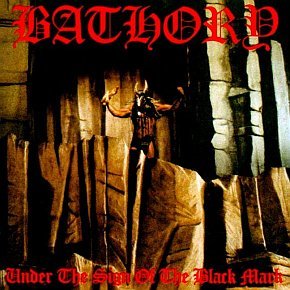
|
“From the interviews I’ve read though, he never liked that album. I guess it’s because it’s not the album he wanted to make. I think he wanted to make Blood Fire Death or something like that. I think the strange guitar sound wasn’t what he wanted, and maybe he didn’t want to use the drum machine. I think everything turned out in a way he didn’t want, and didn’t expect. It was not what he had imagined it to be, but I guess that is why it is so great. The music turned into an unknown entity that he never wanted to make himself (laughs), and that’s one of the things that make that album magical. Even the guy who made it didn’t realise what he was making. It was something like that I would guess.”
October 1988’s Blood Fire Death – album number four – remains Daniel’s favourite however. “I always thought that Blood Fire Death – the next album by Bathory – was even better,” he confirms. “It’s not as extreme, and it’s not as much black metal. It’s a little bit more in the thrash metal territory, but then again with the songs on Blood Fire Death Bathory developed into something else with majestic, long songs like ‘A Fine Day To Die’ or the last song ‘Blood Fire Death’. Those two songs in particular I think are the best Bathory ever made because there are tormented screams from Satan or God knows where, and I think the sound is a little bit better. It’s a little bit more majestic, it’s all a little bit more together. I think that Blood Fire Death is the best, but Under The Sign Of The Black Mark is at least the second best (laughs).”
Later Bathory material perhaps failed to match the overall quality of earlier offerings. “When I bought Hammerheart I thought it sucked when I listened to it for the first time,” the scribe admits. “I then gave it some more tries though, and now I think the songs are very good and the sound is okay. It’s not great but it’s okay, but the vocals are the problem for me. I think the vocals really don’t sound so good. The vocals on Blood Fire Death are one of my favourite vocal performances on a metal album ever, and when he tried to sing using clean vocals he just wasn’t the guy to do it. I’m a bit mixed about that and then Twilight Of The Gods (June 1991) is an okay album, but it’s nothing special. Even though I know many people love those two albums, for me the true essence of Bathory was gone and there was another Bathory. With the albums that came after Twilight Of The Gods like Octagon (October 1995) or Blood On Ice, for me Bathory was over. They’re not bad albums, but they’re just a fraction of what was there before. For me it was fading glory at best.”
September 1994’s Album and June 1997’s Purity Of Essence were released under the Quorthon moniker. “I heard a couple of songs here and there from those albums, but for me time had just run out for Bathory,” Daniel reckons. “Maybe he tried to make the music that he wanted to make originally, and with more money and better studios and a lot more time (laughs). For me he tried to do the music that he was into, and not the music that was unique to him. I think that was the problem. My favourite band is Black Sabbath, but if I tried to remake the first Black Sabbath album it wouldn’t turn out very good I guess.”
Bathory’s influence on the black metal genre is immense. “If you look at Mayhem and Burzum and all those bands, without Bathory they would not have existed,” the bassist judges. “Bathory was the only band that really mattered to that Norwegian scene; if you listen to Venom or Mercyful Fate or even Hellhammer, they don’t sound like those bands. They sound like Bathory. I think Bathory is the start of what we call black metal today, and without Bathory there would not be any black metal.”
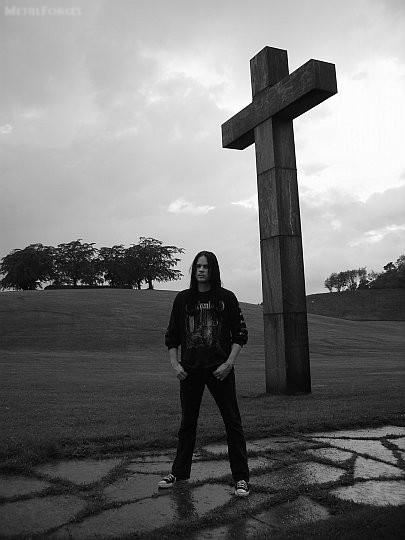
|
And as well, the group’s influence extends to Viking metal. “The bands that call themselves Viking metal like Enslaved, their lyrics are straight from Hammerheart,” Daniel submits. “I think Bathory was the first band to do an entire album with just lyrics about Norse mythology that I know of. Maybe there were other bands outside of metal, but I think Hammerheart is a very important album in that sense even though the guys from Enslaved I know tend to cite the Yngwie Malmsteen song ‘I Am A Viking’ (from 1985’s Marching Out) as their biggest inspiration for going for those things.”
In their Swedish homeland, the author calculates that Bathory were ‘a cornerstone for the entire scene.’ “Just because they were from Sweden and played extreme metal, people got inspired by that,” he explains. “Even though there were bands that turned up around them like Entombed or Dismember, they didn’t sound anything at all like Bathory. I know that Per (Yngve ‘Dead’ Ohlin) though – the singer from Morbid – was very, very much inspired by Bathory, and he wanted to make something like that when he started Morbid. Of course then he was the one who left Sweden to join Mayhem, and he was probably the one who got Mayhem into all that satanic, very dark stuff that he took from Bathory. The other guys from Morbid started Entombed later, so in a sense everything comes from Bathory (laughs). They had a huge impact on the ones that were important for things to come.”
Sadly, Daniel never met Quorthon. “I saw him once though,” he offers. “I live very close to a football and ice hockey centre in Stockholm, and he was a big fan of one of the teams from Stockholm. One time there was a game and I went to the store to buy milk or whatever, and there he was outside with some friends of his. I knew it was him, but I didn’t know what to say. I couldn’t have said to him ‘Hello, I like your music.’ I still looked at him for like three minutes, and then he went away to see the game (laughs). That was the only time I ever saw him. It’s one of the only times in my life I’ve been starstruck.”
On June 7th, 2004, Quorthon tragically succumbed to heart failure in his apartment in Stockholm, Sweden at the age of 38. An interview with the man had been scheduled for several weeks later, the resulting content meant for inclusion in Swedish Death Metal. “I met friends of his,” the critic begins. “They said ‘Yeah, he’s heard about the book and he’s going to do it.’ I arranged this interview, and then a few weeks later I heard he was dead. It was awful, terrible. The book missed a lot because of that; I think it would’ve been a lot better if I had done that interview. It was a terrible loss for me. It could’ve taken off in any direction though. He could’ve said ‘I don’t wanna talk about this. It was just when I was young and did stupid music,’ or maybe he would’ve said ‘I’m starting to come around now.’ I think the latter because he was just starting to realise how big of an impact he had had, and maybe he would’ve opened up and spoken about everything.
“I don’t know. Ideally he would’ve talked so much I could’ve made a book about Bathory and only Bathory (laughs). That book can never be made now, but that book should’ve been made. His legacy should’ve been documented as much as possible. It’s sad that he died before that could happen. Bathory for me is one of the top five Swedish bands ever in the history of music. Abba, Bathory, Entombed, and a few other bands. Yngwie Malmsteen perhaps.”
A compendium of the movement, Swedish Death Metal took several years to compile. “I was pretty alone when I grew up listening to heavy metal,” Daniel confesses. “It was me and a friend in my class called Stefan. We were the only two guys into metal, and we always wanted things to get more extreme. It started with Black Sabbath, Judas Priest, and Iron Maiden, and then we discovered Venom, Metallica, and Slayer, Then came Bathory, and then came the whole death metal scene. It happened at the same time I became a teenager. We didn’t realise it then, but our teens were the death metal era. The little town we lived by coincidence was a big centre for death metal in Sweden. Every band came there, all the Swedish bands and Carcass, Morbid Angel, Death, Napalm Death. I lived death metal, and then when I moved away from home when I was 21 I left all my demo cassettes at my parents’ house. I moved to try to get a girlfriend, a job and stuff like that, and then I realised I wanted to have my cassettes back but they were gone. They had thrown them away.
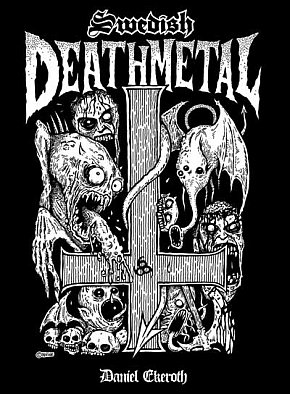
|
“I needed to get those demos back, so I started to make a list of the demos I once had. I then started to write about every bands, like ‘this band had a guitar player called blah blah blah.’ At some point I just said ‘I will try to make a book out of this with all the bands,’ and then it grew into wanting to write a history of this music movement that I grew up with – even though I didn’t participate as a musician back then. Suddenly it was a big project, and for many, many years I just tried to get everything back and write all this. I think the last two years of writing was when I first realised that this is really going to happen. I don’t view myself as a writer or anything; it was just a freak accident that this book came to happen.”
The writer personally knew many of the interviewees involved. “The interviews were not that organised because I met them regularly,” he verifies. “There’d be something they’d say to me, and I’d put it in the book. I left out many bands because I didn’t know if they were thrash metal, death metal, black metal. I had to keep it short. I think the book turned out pretty long anyway, but it could’ve been ten times longer.”
Whether more tomes related to the heavy metal genre are on the horizon is unclear. “I don’t know,” Daniel muses. “What can I write about? A book about Bathory would’ve been good, but without Quorthon it just won’t happen. Maybe a book about Entombed might be possible, but then again death metal was the thing that I grew up with. What I might be able to do is a book about Swedish extreme hardcore punk in the 80s because I listened to a lot of that, and I know many of those people as well. That I think is the most probable if I were to make another book like this, but then I know it’s gonna be 5 to 10 years of work. I’ll just have to see. I write articles now for a Swedish magazine called Sweden Rock, and it’s very hard to find the energy and time to do something else. The Swedish Death Metal book was basically an accident. If I had known from the beginning how much work it would be, I would probably have never made it.”
Under The Sign Of The Black Mark was released in the United Kingdom on May 8th, 1987 through Under One Flag.
Interview published in May 2012.
